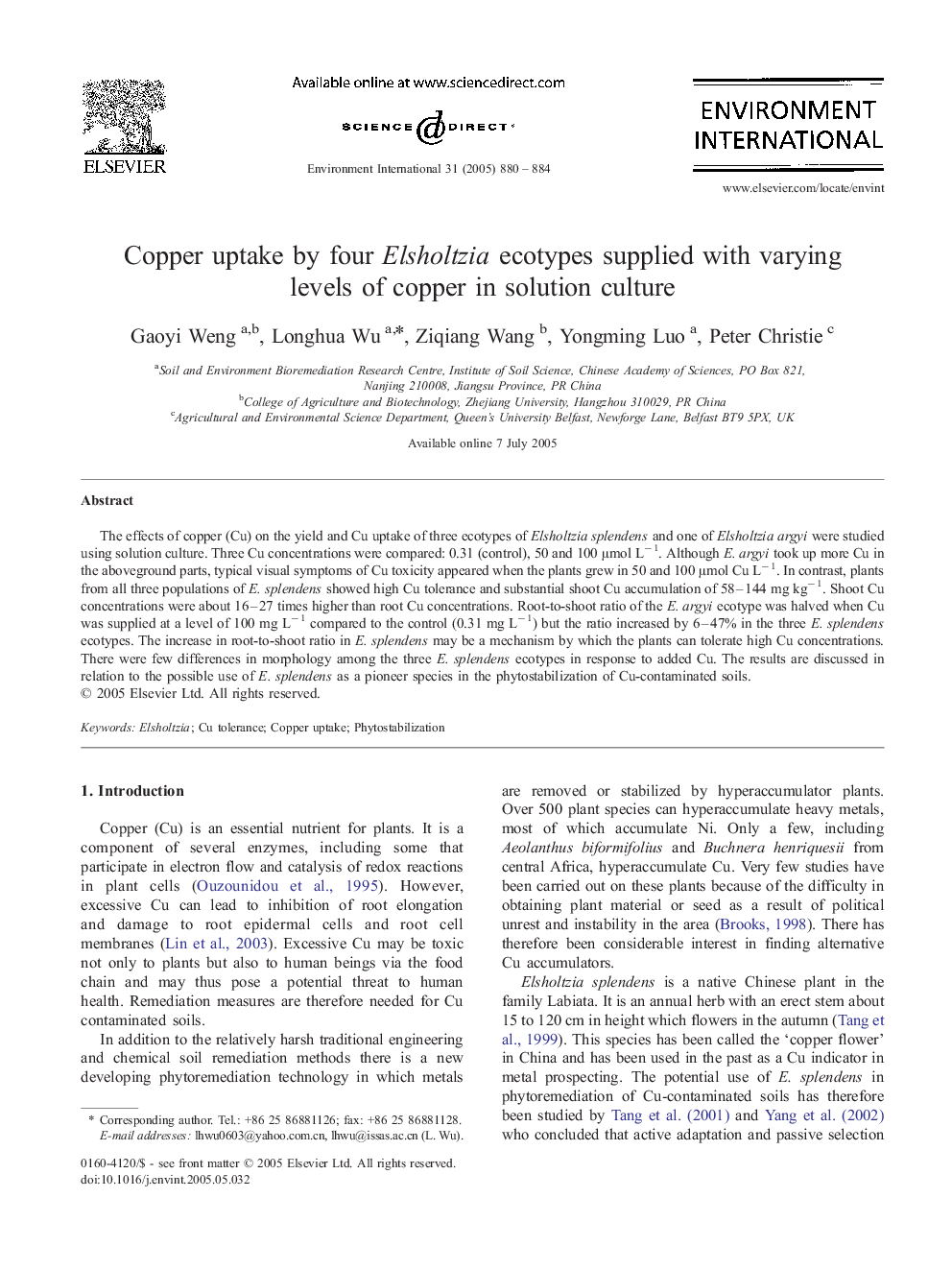| Article ID | Journal | Published Year | Pages | File Type |
|---|---|---|---|---|
| 9455504 | Environment International | 2005 | 5 Pages |
Abstract
The effects of copper (Cu) on the yield and Cu uptake of three ecotypes of Elsholtzia splendens and one of Elsholtzia argyi were studied using solution culture. Three Cu concentrations were compared: 0.31 (control), 50 and 100 μmol Lâ 1. Although E. argyi took up more Cu in the aboveground parts, typical visual symptoms of Cu toxicity appeared when the plants grew in 50 and 100 μmol Cu Lâ 1. In contrast, plants from all three populations of E. splendens showed high Cu tolerance and substantial shoot Cu accumulation of 58-144 mg kgâ 1. Shoot Cu concentrations were about 16-27 times higher than root Cu concentrations. Root-to-shoot ratio of the E. argyi ecotype was halved when Cu was supplied at a level of 100 mg Lâ 1 compared to the control (0.31 mg Lâ 1) but the ratio increased by 6-47% in the three E. splendens ecotypes. The increase in root-to-shoot ratio in E. splendens may be a mechanism by which the plants can tolerate high Cu concentrations. There were few differences in morphology among the three E. splendens ecotypes in response to added Cu. The results are discussed in relation to the possible use of E. splendens as a pioneer species in the phytostabilization of Cu-contaminated soils.
Keywords
Related Topics
Life Sciences
Environmental Science
Environmental Chemistry
Authors
Gaoyi Weng, Longhua Wu, Ziqiang Wang, Yongming Luo, Peter Christie,
